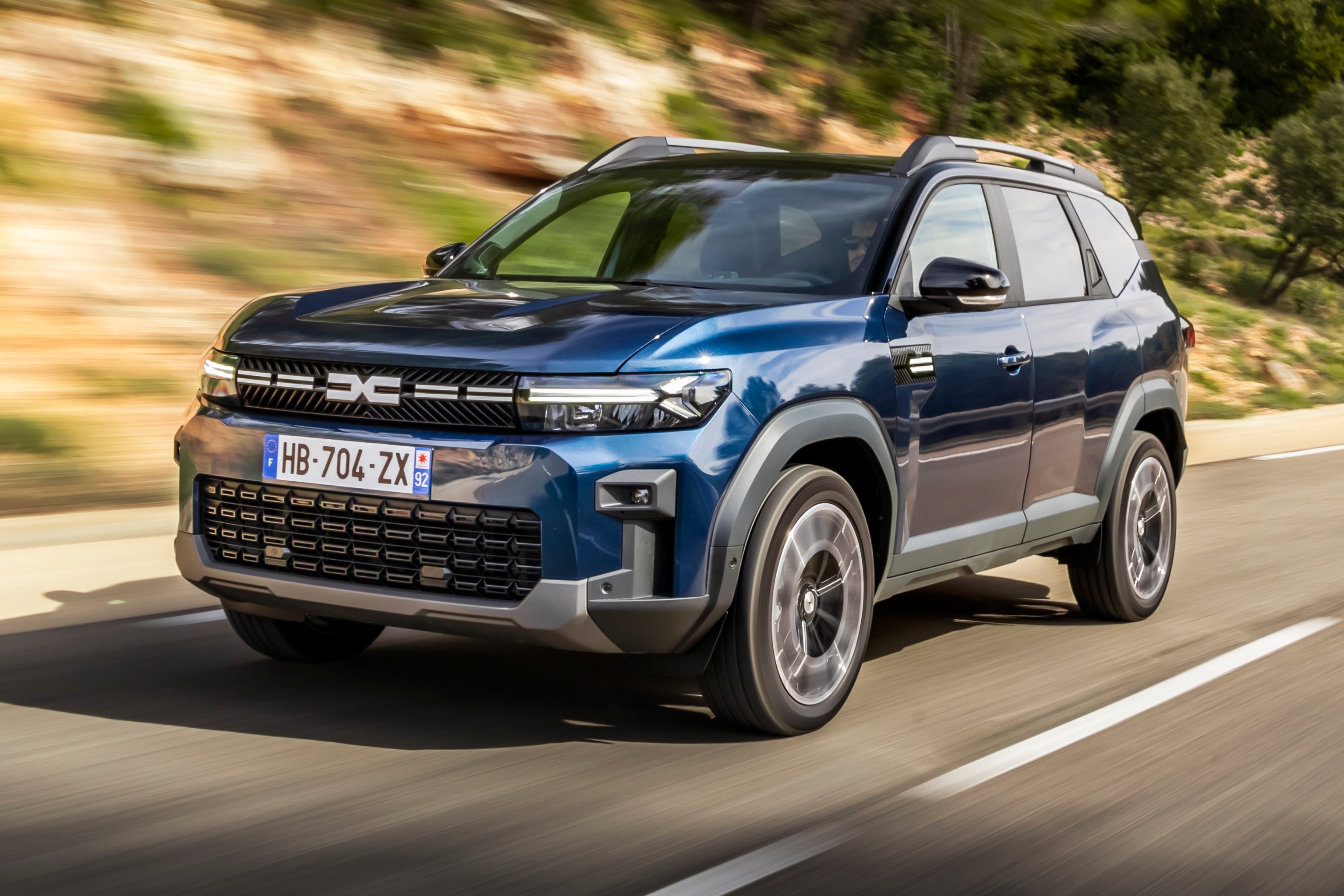Dacia Bigster Review 2025: Price, specs & boot space
Written by Phill Tromans
Quick overview
Pros
- Lots of interior space
- Low price tag
- Stylish, chunky looks
Cons
- Cost-saving interior materials
- Wind noise at higher speeds
- Lacks the latest active safety systems
Verdict: Is the Dacia Bigster a good car?
"Staying true to its name, the Bigster is Dacia's largest vehicle yet, but keeps an impressively low price while jamming in lots of modern features. It's got Value For Money written all over it, with impressive levels of practicality."
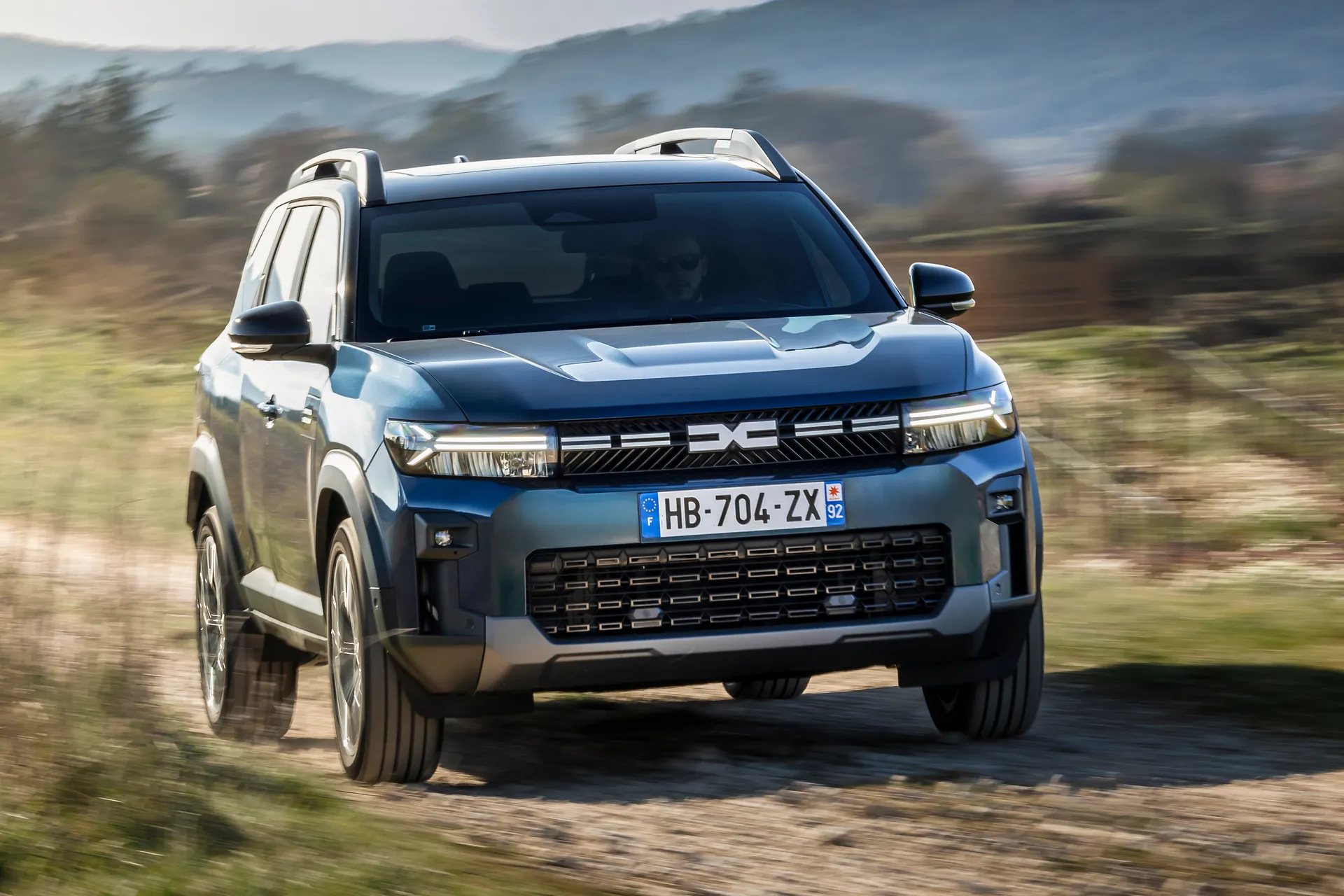
Dacia is a brand that prides itself on value for money, but by introducing the Bigster it's moved into a larger, more expensive segment. And yet this spacious, rugged-looking family SUV starts at less than £25,000, and even the most expensive model is less than £30,000 – less than the cheapest Nissan Qashqai.
Drive one and you can quickly see where there have been necessary cost savings, but Dacia has been very canny about where to invest and where to save. The Bigster has most of the latest features you'd expect in a new car in 2025, as well as a few clever touches of its own, and it's very spacious, too. Line it up against equivalent cars and it holds up pretty well, but factor in the rock-bottom price and it suddenly looks like a cracking deal.
This all follows in the footsteps of similarly impressie-yet-affordable cars such as the Duster and the Jogger, and the Bigster continues the good work from the Renault-owned Romanian brand. If you're looking for space and features for minimal money, and don't mind putting up with a few minor compromises, then it's a really solid choice.
Those compromises come in the form on interior quality, with some decidedly non-premium plastics, and a bit more ambient noise, with a fair amount of wind noise at higher speeds and a gearbox in the top-spec hybrid 155 model that loves to hold on to lower gears, resulting in noisy engine revving. But when you look at the price difference between the Bigster and other cars that don't have these problems, they don't seem that serious.
One area that might raise more concern is a lack of the latest active safety systems, meaning tech that helps to prevent accidents. Dacia is forthright about this – it doesn't think customers want to pay for them. Instead, it's going big on passive safety – making sure the Bigster is inherently as safe as possible – and including systems that it legally has to install, such as automatic emergency braking and lane-keep assist. At the time of writing, the Bigster hadn't been tested by independent safety organisation Euro NCAP, but Dacia doesn't expect it to get the full five-star score, precisely because it doesn't have those extra bits of safety tech.
In just about all other areas, the Bigster is at least competent and, in some, very impressive. Features like dual-zone air-conditioning, 40:20:40-split folding rear seats, and rear parking sensors and rear-view camera are all included as standard across the range, while the higher-spec models include a panoramic opening sunroof, adaptive cruise control, heated front seats and steering wheel, anda quick-clear windscreen for frosty mornings.
There's a big boot and loads of rear-legroom, and a choice of eletrified engines – either full-hybrid or mild-hybrid petrol power. While front-wheel drive is standard, the option of four-wheel drive means that the Bigster should be competent off-road, too, much like its Duster stablemate.
Is the Dacia Bigster right for you?
If you're after a roomy SUV for less, then you should absolutely check the Bigster out. It's a great option if you're trading up from the company's own Duster to get more space, or if this is your first Dacia model – the brand is expecting it to bring in lots of new customers, and we can see why.
It won't feel quite as premium as some rivals inside, but – and we'll be saying this a lot – when you factor in the price, it doesn't seem a big issue. You'll also need to be ok with Dacia's stance on safety systems, especially in a family car. There's absolutely no suggestion that it isn't safe, but some customer may prefer to have extra layers of safety tech that rivals can offer.
What's the best Dacia Bigster model/engine to choose?
Although it's the only engine we've tried so far, we reckon the 155 Hybrid powertrain will be the pick of the bunch. As the largest Dacia ever, the Bigster is also the heaviest in the current range, so the extra poke of the 155 is very welcome. Plus it's based around an inline-four-cylinder engine, which we suspect means it'll be smoother and more refined than the three-cylinder options. The 155 can also be driven in electric mode for a large chunk of the time when around town, which really cuts down fuel use.
You could pair that with the base Expression trim and have a decent level of equipment, but opting for the Journey or Extreme grades won't add much to the price, especially if you're buying on finance. As for which of the latter you opt for, a lot of that will come down to taste, with Extreme taking on a more aggressive style than Journey and featuring a more hard-wearing interior. Equipment levels across the two are high.
What other cars are similar to the Dacia Bigster?
The Dacia Bigster's sheer size and interior space means it's a rival for large SUVs like the Skoda Kodiaq, despite being cheaper than more compact offerings like the Nissan Qashqai, which is undercuts by £5,000.
The Kia Sportage could also be a rival, as could the Citroen C5 Aircross. The latter is probably the only new car that comes close in terms of price. To find anything competing in terms of value for money, you'd need to look at similar-sized cars on the used market.
Comfort and design: Dacia Bigster interior
"The Bigster's cabin is stylish as far as Dacia models go, and includes most of the key equipment new-car buyers are after these days. And as the car's name implies, you won't be short on space."
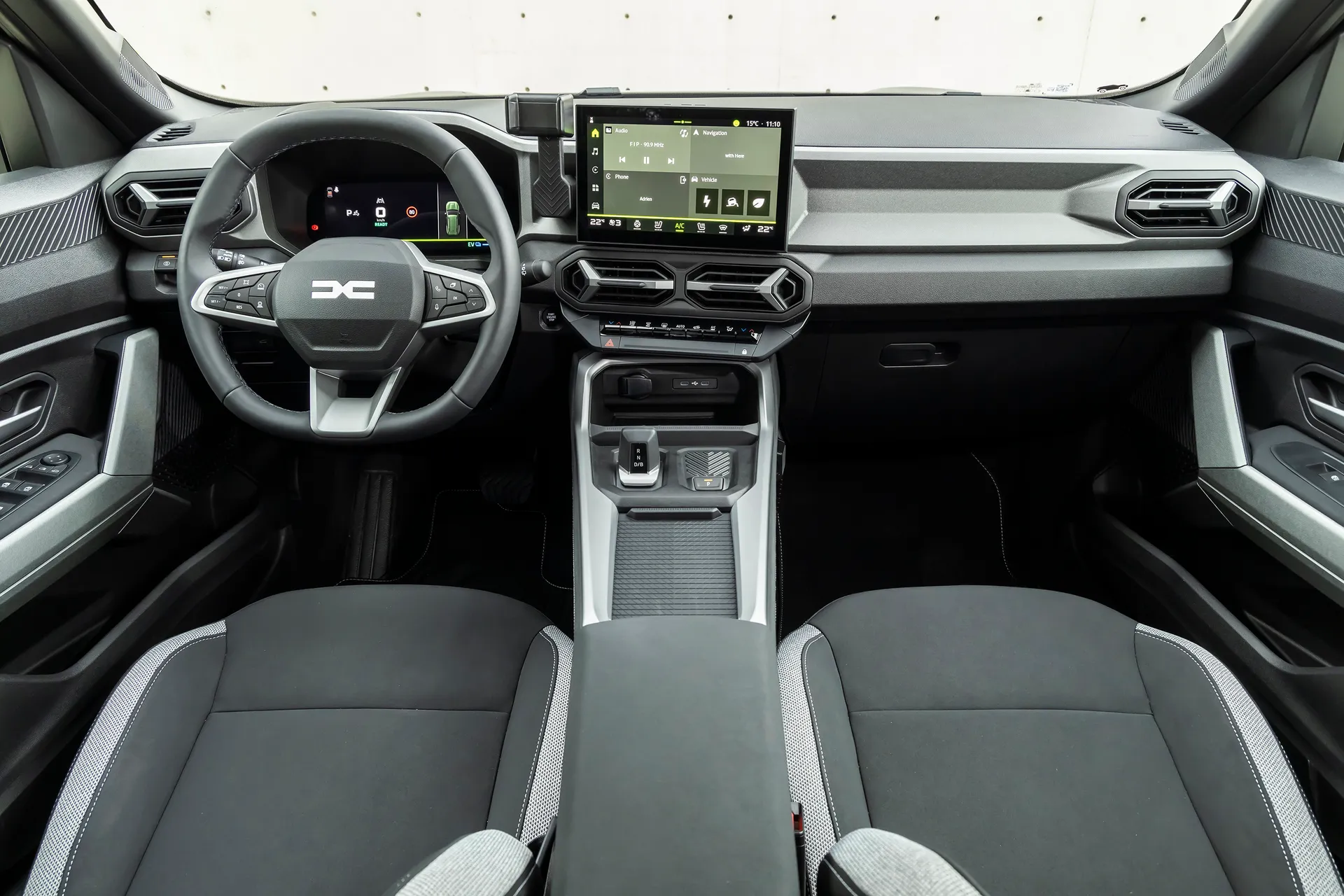
Dacia cabins used to be more about function than form, but the Duster proved the company can marry both very well, and that continues with the Bigster. The cabin design is awfully similar to the Duster's but that's no bad thing at all.
It's not the last word in plushness (or barely the first word, come to that), but the cabin looks good, and after a few minutes you won't really notice the lack of soft-touch materials that most rivals will boast (at an extra cost). All the features are logically laid out and we're very pleased to see that there are physical buttons for the climate control, meaning you don't have to flail through touchscreens to adjust the temperature on the move.
We also like that the Extreme model has been trimmed in a way that makes it easy to clean, which will be handy whether you're going to be climbing aboard in muddy walking boots or loading in a child who likes nothing more than grinding a half-eaten Custard Cream into vehicle upholstery.
A 10-inch digital instrument cluster is a welcome sight considering the low price, although it's smaller at only 7 inches in the base Expression trim. Meanwhile, Dacia's innovative YouClip system, which dots various attachment points around the car, has myriad uses and a whole host of available accessories including a phone holder, tablet mount and additional cupholders.
Infotainment: Touchscreen, USB, nav and stereo in the Dacia Bigster
All models come with a 10.1-inch infotainment screen, but the unit in the entry-level Bigster Expression does without navigation. That's not the end of the world given that you still have Android Auto and Apple CarPlay smartphone connectivity, so it'll be easy enough to display your preferred mobile navigation app, which will be a lot of people's preference anyway.
It looks to be the same unit fitted to fancier-trimmed versions of the Duster. In that car, we found the system to be a little laggy. We shouldn't be surprised, really – at this kind of price, something has to give.
The Journey and Extreme-trimmed Bigsters get the upgraded Media Nav Line setup, which based on the short amount of time we spent with it seems faster and generally intuitive to use. These models also get the upgraded Arkamys 3D sound system which has six speakers, compared to only four on the Expression, although we've not had a chance to fully test it. There are USB-C ports front and rear and a wireless charging pad in the Journey trim.
Space and practicality: Dacia Bigster boot space
As befits the car's name, Dacia has maximised space inside the Bigster. There's no seven-seat version – although the dimensions would cope with an extra row of seats, Dacia says it would compromise rear leg room in the second row. But that means up to five passengers have acres of space, with loads of rear legroom.
There's a load of storage within the Bigster, too. It varies slightly by trim, but the Journey trim that we tried had a high centre console with a big built-in cooler compartment under the armrest, while in the back there are pockets in the back of the front seats for kids to keep magazines and the like. Front and rear doors get generous pockets, and the YouClip mounting points let you add extra options such as cupholders, phone holders and more. In fact, Dacia has opened up the YouClip design to let people design and 3D print their own accessories, which should mean it gets every more useful.
The huge boot should be able to cope with just about anything family life throws at it. Its exact size varies by powertrain because of the various battery packaging requirements – you'll get the most space in the Mild Hybrid 140 model, with 677 litres of space, while the Mild Hybrid 130 4x4 model has 629 litres and the Hybrid 155 has 612 litres. But even the smallest Bigster boot is pretty cavernous, and there's a false floor to keep the loading space flat.
The rear seats fold in a 40:20:40 split for flexibility between passenger and boot space, although they don't fold down completely flat. However, you still get a whopping 1977 litres of capacity and 2.7 metres of load bay to house larger items. The Journey trim gets an electric boot lid that opens and closes with the touch of a button.
Handling and ride quality: What is the Dacia Bigster like to drive?
"You might expect the Bigster to drive like a bigger Duster... and you'd be pretty much right. And that's a good thing."
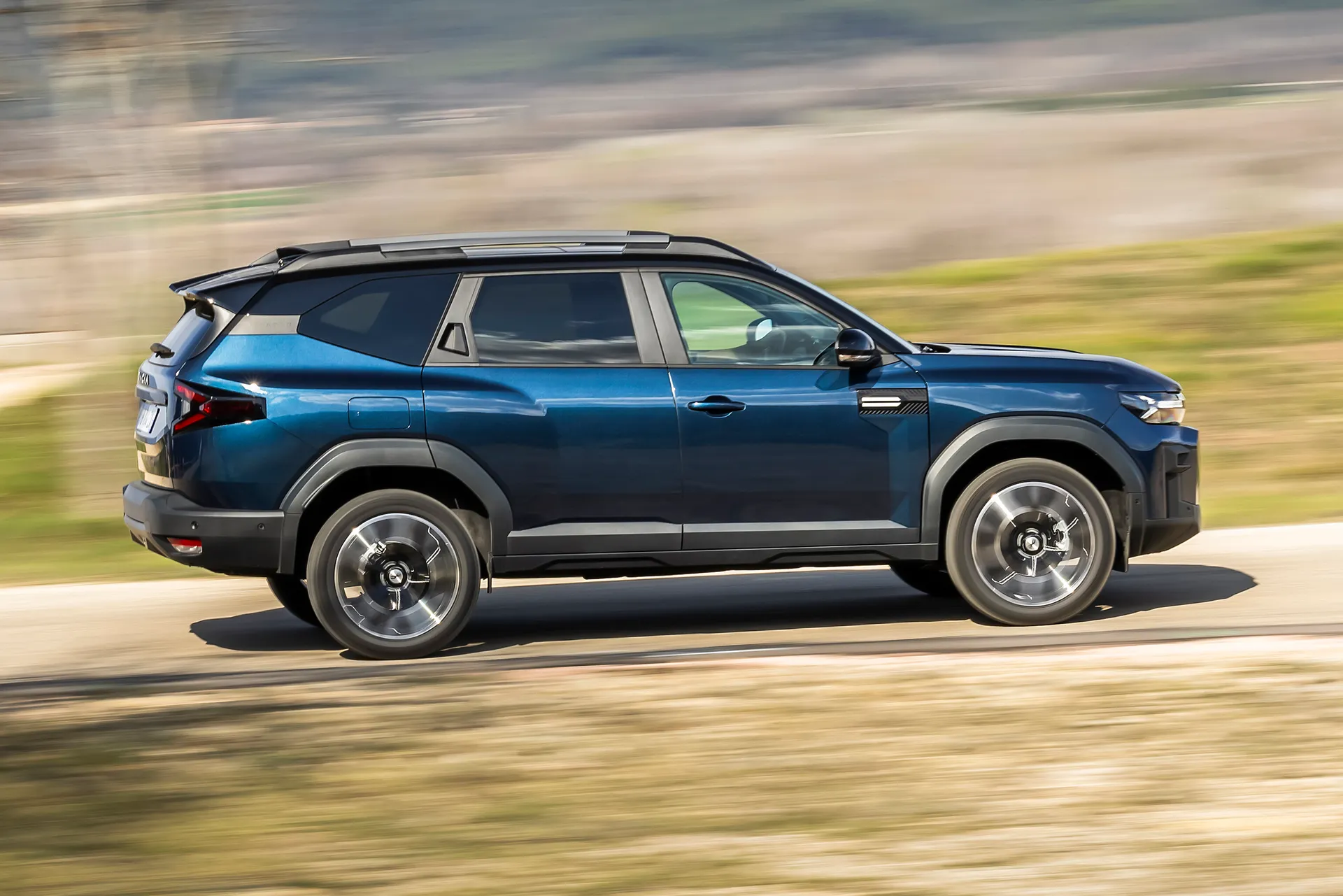
If you've had a go in the latest Duster – or read our review of it – you might have a preconceived notion about what the Bigster is like to drive. That is to say, you'd expect it to be very far from sporty, and more focused on comfort, with some off-road ability thrown in, especially on the 4x4 models.
Those preconceptions are almost entirely met. The Bigster is a big, soft machine that is more than happy to pootle around town or cruise on the motorway, and it'll keep you pretty comfortable while doing it. Try and take it around a corner too fast and it'll protest, by way of too much body roll, but keep things calm and sedate and you'll find it's an entirely acceptable driving experience.
The steering isn't exactly pin-sharp or ultra-direct, but it's easy enough to know what the front wheels are doing. The ride is more than comfortable enough – while you'll feel uneven surfaces under the car, the suspension will file away the harsh edges.
We drove the top-spec Hybrid 155 model, which has enough power for everyday use (0-62mph takes 9.7 seconds) and flits pretty seamlessly between petrol engine and electric motor, and should keep your fuel costs down. However, as it does in the Duster, the automatic gearbox has a tendency to hang on to low gears for too long, which sends the revs annoyingly high for an annoyingly long time.
We suspect this Hybrid model will be the smoothest to drive as it's the only one that uses a four-cylinder engine – other Bigsters use inline-three-cylinder engines, which are known for being worse in terms of vibrations, and the Renault-shared unit is one of the less refined ones out there, too.
Although most Bigsters will spend almost all of their lives on solid ground, it should, much like the Duster, be better than the average family-focused SUV owing to its generous ground clearance. The 4x4 option will improve its capabilities further, and we know from experience that the Duster is pretty capable. However, we've yet to try the Bigster away from the tarmac.
What engines and gearboxes are available in the Dacia Bigster?
Three power options are available in the Dacia Bigster. Those wanting to head off-road will be interested in the petrol-powered Mild Hybrid 130 4x4 model, which uses a mild-hybrid system with a 1.2-litre, three-cylinder engine producing 130PS. The all-wheel-drive system is mated to a six-speed manual gearbox and has a Terrain Control setup that lets you switch the car between five driving modes, including Snow, Mud/Sand and Off-Road.
A more powerful, front-wheel-drive version of this engine is the Mild Hybrid 140 with, as the name suggests, 140PS, while the top-spec engine is the Hybrid 155. This is a full-hybrid car with a four-cylinder, 1.8-litre petrol engine, an electric motor and a starter/generator, producing 155PS and 170Nm all together and using an automatic gearbox. Dacia says it can stay in all-electric mode up to 80% of the time during city driving, and indeed we found it impressively keen on relying on battery power at low speeds.
Refinement and noise levels
In theory, the Bigster should be quieter and more refined than any Dacia we've experienced before, with an acoustic windscreen and thicker glazing used to reduce road and wind noise. But while road noise is contained adequately, there is a lot of wind noise even at surprisingly low speeds. Sure, the Bigster is a large, bluff and boxy car, but the swirling and buffeting around the car at anything other than 40mph is too loud, even factoring in the low price. That said, you can always crank up the sound system to mask it.
Safety equipment: How safe is the Dacia Bigster?
Dacia models have often been given poor Euro NCAP results, with recent examples being the Jogger achieving just one star, and the Duster three stars. The latter is probably more representative of what we can expect once the Bigster is tested, as it's more closely related.
It's worth noting that a lot of the Duster's lacklustre result has to do with its available electronic safety systems, or lack thereof, plus the performance of the safety features it actually has. The rating for that part of the assessment was 57% overall, compared to 70% for its adult occupant protection ability and 84% for child occupant protection. It was also only rated at 60% for its vulnerable road user protection.
Again, we should say that this a deliberate strategy from Dacia to omit such systems to keep costs down, rather than any systems not working as they should. As far as the present safety equipment goes, the Bigster gets autonomous emergency braking, traffic sign recognition with speeding alert, lane keeping assistance, driver attention warning and an emergency call system.
MPG and fuel costs: What does a Dacia Bigster cost to run?
"No version of the Bigster should be costly to run, with fuel economy figures ranging from around 46 to just over 60mpg."

The most economical version of the Bigster is the Hybrid, with an official combined figure of 60.1mpg. With Dacia claiming it can run for up to 80% of driving time in pure electric power, it might return even more than that, depending on how you use it.
The Mild Hybrid 140 is still plenty economical, returning 51.4mpg. The Mild Hybrid 130 is the least frugal, which shouldn't be a surprise given that it's tasked with powering all four wheels. It manages 46.3mpg.
Dacia Bigster reliability and warranty
The Bigster's 1.2-litre inline-three engine is widely used across various Dacia and Renault products, and there aren't any common faults with the unit that we're aware of. The Hybrid 155 is a new powertrain and thus something of an unknown quantity at this stage.
It should be reassuring that Dacia often places well in the HonestJohn.co.uk Satisfaction Index survey. As standard there's a fairly ordinary three-year/60,000 warranty, but this can be extended to seven years or 75,000 miles – whichever comes first – via the Dacia Zen programme if the car is serviced at Dacia dealerships.
VED car tax: What is the annual road tax on a Dacia Bigster?
From 1 April 2025, when the new Vehicle Excise Duty (VED) rates come into force, the first-year rate of the Hybrid 155 will be £390, while the Mild Hybrid 140 will cost £440 and the Mild Hybrid 130 £540. All of these will be factored into the on-the-road price, however. From year two of ownership onwards, it'll be £195 a year for all three models.
Dacia Bigster price
"Just like the Duster, the Dacia Bigster offers exceptional value for money with a starting price of £24,995, and even the most expensive one is under £30k."
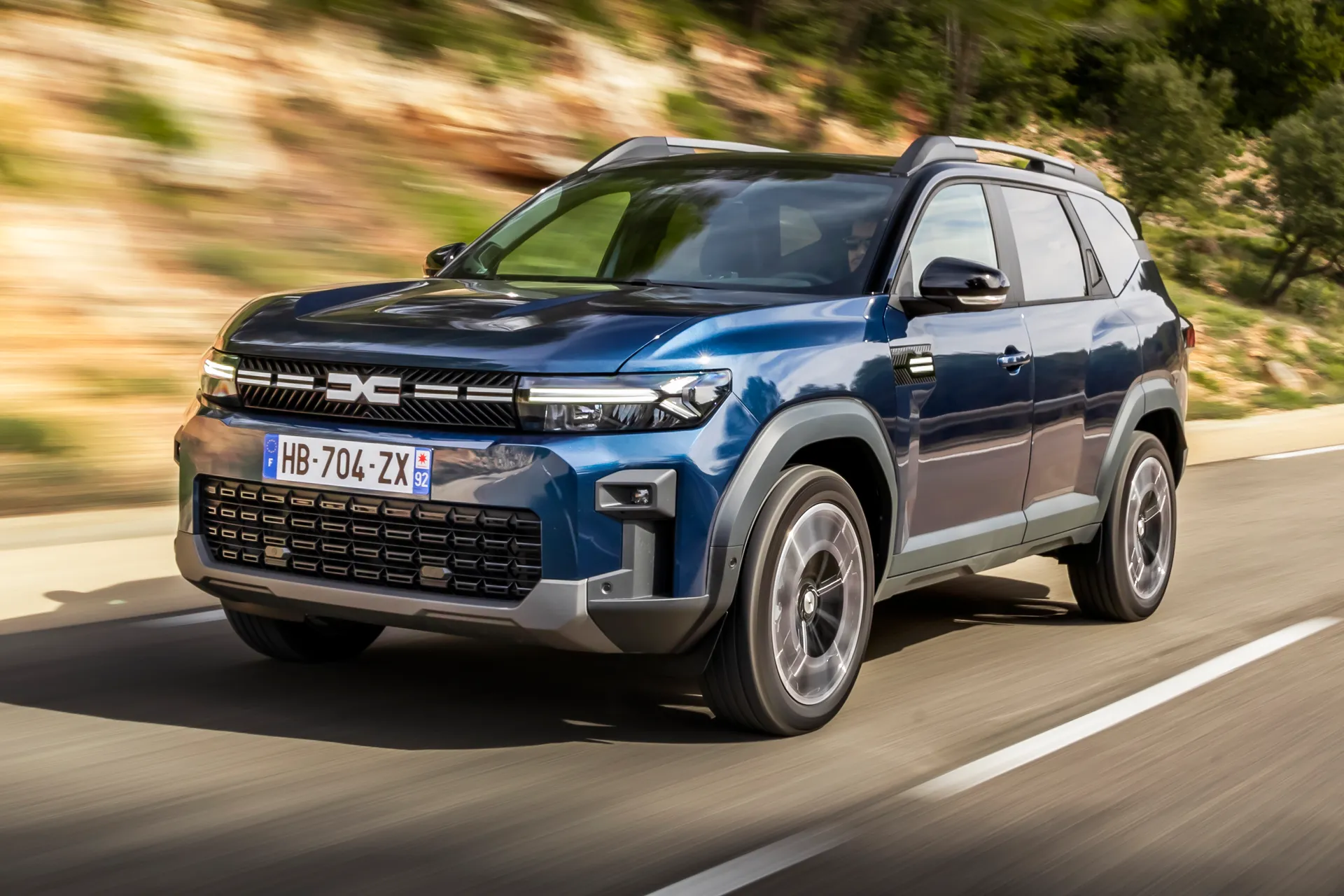
The new Dacia Bigster is available for pre-order now and the first deliveries are expected in the Spring. Prices start at £24,995 for the entry-level Expression model, while the mid-spec Journey costs from £26,245 and the top-spec Extreme model starts at £26,495.
Three different powertrains are available. The starting price of the Expression trim is for the Mild Hybrid 140 petrol engine, while the Mild Hybrid 130 4x4 model, with four-wheel drive, costs £27,195 and the Hybrid 155, with a full-hybrid petrol-electric setup, costs from £27,995.
The Journey trim starts with the Mild Hybrid 140, and the Hybrid 155 model is £29,245 – no 4x4 Journey is available. In Extreme form, all powertrains are available – the Mild Hybrid 130 4x4 costs from £28,695 and the Hybrid 155 costs from £29,495.
Trim levels and standard equipment
The entry-level Bigster is the Expression, which comes with 17-inch alloy wheels and roof bars and has rear parking sensors and a reversing camera. Inside, there's dual-zone air-con and the smaller 7.0-inch digital instrument screen.
The Extreme trim adds 18-inch alloy wheels, modular roof bars that you can reposition crosswise, an opening panoramic sunroof and Copper Brown trim both inside and out for a more sophisticated look. The upholstery is a washable synthetic material, and rubber floor and boot mats are standard. Hill descent control is included for slippery off-road hills. You also get the bigger driver instrument display and the YouClip cup holder, bag hook and portable flashlight.
Should the Extreme be your cup of tea, you can also add various accessories to complement the look, including a Sleep Pack (a double bed for the boot), a roof rack and a tent that fits to the Bigster's rear.
If the Extreme is a bit rugged for your tastes, the Journey trim is more luxury-focused. It also has 19-inch wheels, an electric boot lid and a hands-free key, as well as a higher centre console with an armrest and chilled compartment. A wireless phone charger and adaptive cruise control are included and there's the option of two-tone paint with a black roof.
Ask the heycar experts: common questions
When will the Dacia Bigster's release date?
How many seats does the Dacia Bigster have?
How much is the Dacia Bigster?
Get our latest advice, news and offers
Keep me updated by email with the latest advice, news and offers from heycar.
By submitting you agree to our privacy policy
